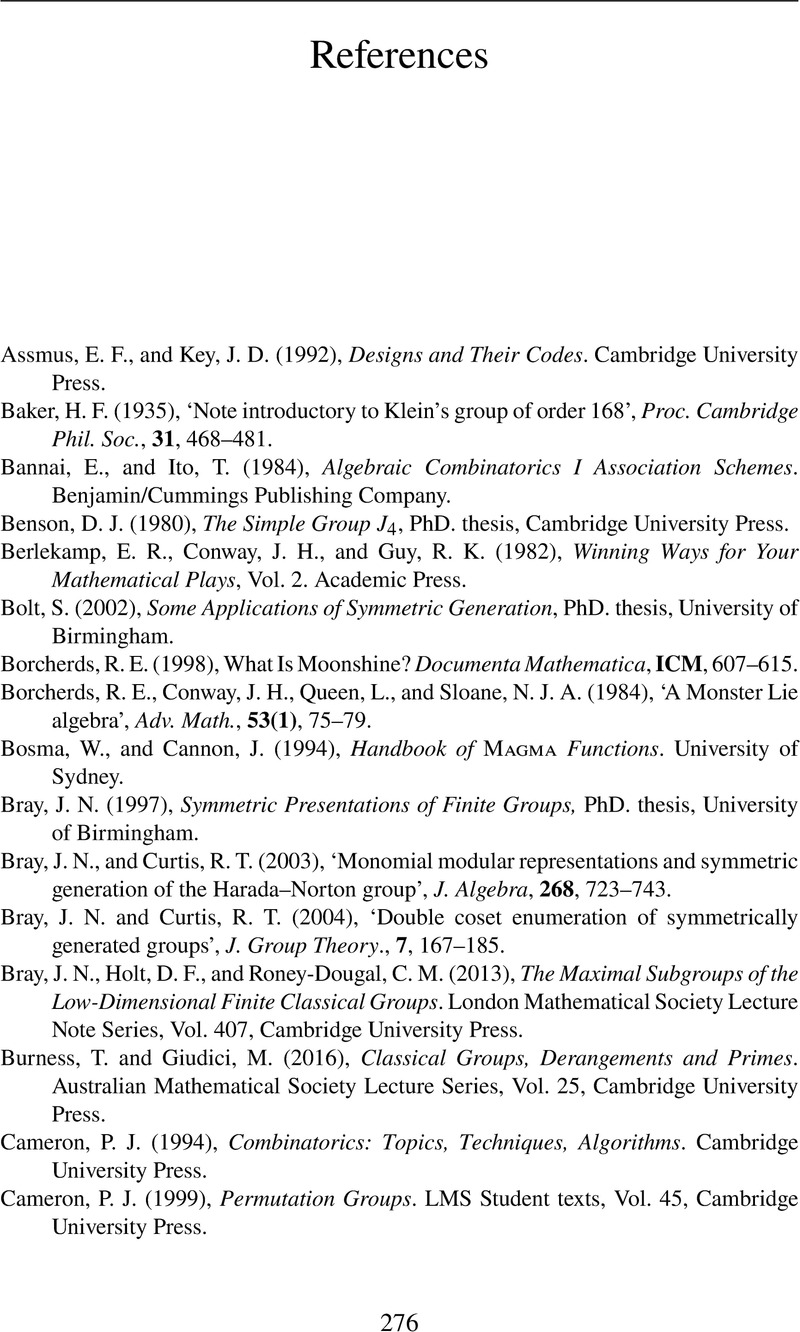Book contents
- Frontmatter
- Dedication
- Contents
- Figures
- Tables
- Preface
- Acknowledgements
- 1 Introduction
- 2 Steiner Systems
- 3 The Miracle Octad Generator
- 4 The Binary Golay Code
- 5 Uniqueness of the Steiner System S(5, 8, 24) and the Group M24
- 6 The Hexacode
- 7 Elements of the Mathieu Group M24
- 8 The Maximal Subgroups of M24
- 9 The Mathieu Group M24
- 10 The Leech Lattice M24
- 11 The Conway Group ·O
- 12 Permutation Actions of M24
- 13 Natural Generators of the Mathieu Groups
- 14 Symmetric Generation Using M24
- 15 The Thompson Chain of Subgroups of Co1
- Appendix MAGMA Code for 7★36 : A9 ↦ Co1
- References
- Index
- References
References
Published online by Cambridge University Press: 31 October 2024
- Frontmatter
- Dedication
- Contents
- Figures
- Tables
- Preface
- Acknowledgements
- 1 Introduction
- 2 Steiner Systems
- 3 The Miracle Octad Generator
- 4 The Binary Golay Code
- 5 Uniqueness of the Steiner System S(5, 8, 24) and the Group M24
- 6 The Hexacode
- 7 Elements of the Mathieu Group M24
- 8 The Maximal Subgroups of M24
- 9 The Mathieu Group M24
- 10 The Leech Lattice M24
- 11 The Conway Group ·O
- 12 Permutation Actions of M24
- 13 Natural Generators of the Mathieu Groups
- 14 Symmetric Generation Using M24
- 15 The Thompson Chain of Subgroups of Co1
- Appendix MAGMA Code for 7★36 : A9 ↦ Co1
- References
- Index
- References
Summary

Information
- Type
- Chapter
- Information
- The Art of Working with the Mathieu Group M24 , pp. 276 - 280Publisher: Cambridge University PressPrint publication year: 2024
